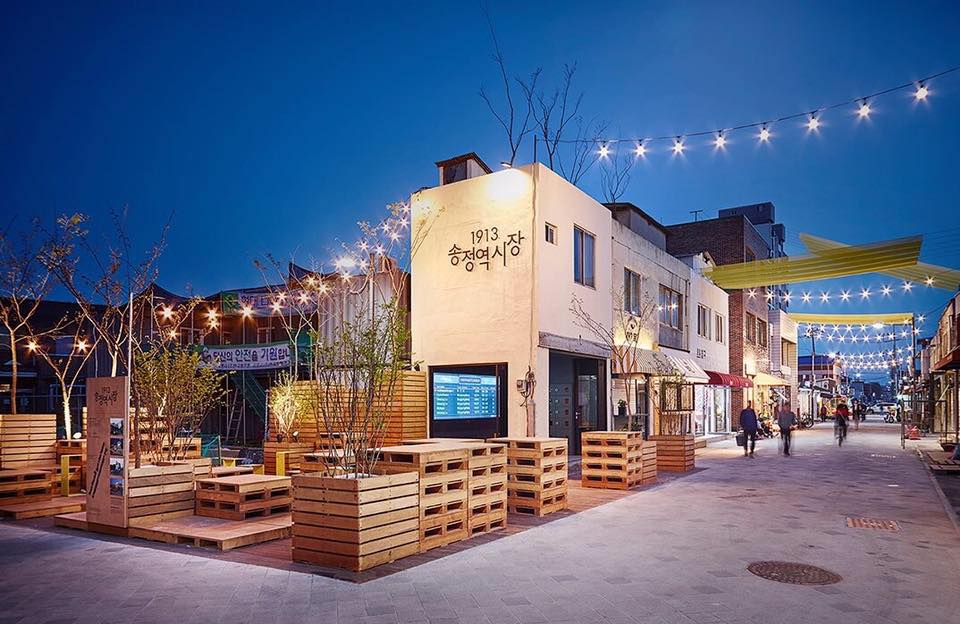
Old, dirty, and deceitful… These are popular preconceptions people have about traditional marketplaces in Korea. As modernized supermarkets replace such marketplaces in the country, only elderly people are left in traditional marketplaces, most of which are located in rural villages.
Gwangju, as its plan to boost the economy of the traditional marketplace on the stasis, has launched a modernization project of a local marketplace. Re-opened in April 2016, Gwangju’s 1913 Songjeong Station Marketplace is now settled as one of the must-visit places in the area.
What distinguishes Songjeong Marketplace from other traditional marketplaces is the active participation of young local entrepreneurs. Contrary to the majority of such marketplaces, you can easily find people in their 20s and 30s managing their own businesses in the marketplace.
Because of the wide variety of items available from stores run by young business owners, the old marketplace is currently in its renaissance. Once a vacant place, Songjeong Marketplace is now visited by several thousands of visitors everyday.
The modernized businesses find their own ways to boost the local business. For instance, a popular bakery here uses local flour and other ingredients.
The appeal of old traditions is also reflected on many of the items. At the revamped marketplace, visitors can find old eats made with a modern twist, like colorful yokan truffles. Instead of bringing a tradition as it is, young entrepreneurs add their own twists on the items by reinterpreting each.
The success of the city’s remodeling project could be achieved with the help of the original small business owners of the marketplace. They were not hesitant to share their decades-old know-hows with the younger generation. Such symbiotic relationship between the old and young generations was the key to success.
1913 Songjeong Station Marketplace is located right across Songjeong KTX Station in Gwangju. The marketplace closes every second and fourth Monday.
By Heewon Kim




